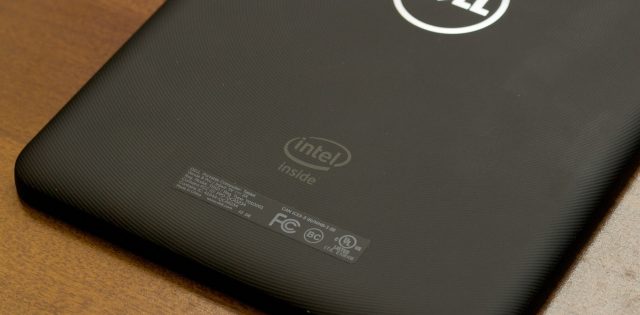
Historically, Intel has been one of the few chipmakers designing, manufacturing, and selling all of its chips itself. AMD, Qualcomm, and other major Intel competitors all design chips (sometimes using intellectual property licensed from ARM or other companies) and then send them to third parties like Taiwan Semiconductor (TSMC), GlobalFoundries, or Samsung to have them manufactured. The Intel of old offered neither manufacturing capacity nor CPU and GPU designs to any of those competitors.
In recent years, Intel has begun testing the waters with other agreements, trying to find other ways to earn revenue without creating more competition for itself. It has manufactured a few non-Intel chips in its own factories, though never anything that would compete directly with its own offerings for PCs, phones, or tablets. Today it announced another kind of "strategic partnership" with Chinese chip designer Rockchip, which will be using Intel-designed x86 CPU cores and an Intel-designed 3G modem in an SoC aimed at low-end Android tablets.
The chip will be part of Intel's "SoFIA" lineup of entry-level mobile SoCs—Intel has already planned a version that uses two Atom CPU cores and its 3G modem and a quad-core version with an LTE modem. Rockchip's offering will slot in between the two, offering four Atom CPU cores and Intel's 3G modem. Other components, including "things like graphics and connectivity" will be contributed by Rockchip. All these SoFIA chips will use Intel's 64-bit "Silvermont" Atom architecture, the same being used in the Bay Trail chips we've seen in some Windows and Android tablets in the last six months or so."Think of this as an addition to our roadmap, not a way to remove or change the roadmap," said Intel CEO Brian Krzanich on a conference call about the agreement.
Krzanich emphasized the strength of Rockchip's relationships with Android tablet OEMs and ODMs in China. It looks like Intel hopes to use Rockchip to win market share for the x86 architecture without having to build those relationships in China from scratch by itself. Both Intel and Rockchip will sell the new chip; Rockchip will focus on Chinese markets, while Intel "will focus on the variety of other customers that we normally focus on."
According to Krzanich, the agreement isn't exclusive in either direction. Intel can take its CPU cores to other companies to forge similar agreements (though Krzanich said there were "no other discussions going on or announcements to make at this time"), and Rockchip is free to continue designing and selling ARM-based chips.
All SoFIA parts are being manufactured at TSMC, which already manufactures the stand-alone versions of Intel's modems—Intel's Mobile Communications division was once a third party called Infineon, and Infineon's designs were made for TSMC's manufacturing processes. Intel mentioned on the call that it plans to move modem and SoFIA production to its own factories at some point in 2016.
While Intel remains mostly absent from high-end Android phones and tablets in the US, its more recent Atom products have started to show up more often in low-cost devices both in the US and elsewhere. Partnering with Rockchip gives Intel another way to get x86 tablets into more hands, which is good for the company in the long run whether Rockchip or Intel sells the chip (Intel wouldn't comment on how revenue generated by the new chip will be split between Intel and Rockchip, just that both companies will be selling it in different markets). Intel thinks the new chip will be available in shipping devices "before the middle of 2015," while Intel's own SoFIA products will start showing up toward the end of this year.
Listing image by Andrew Cunningham
reader comments
35